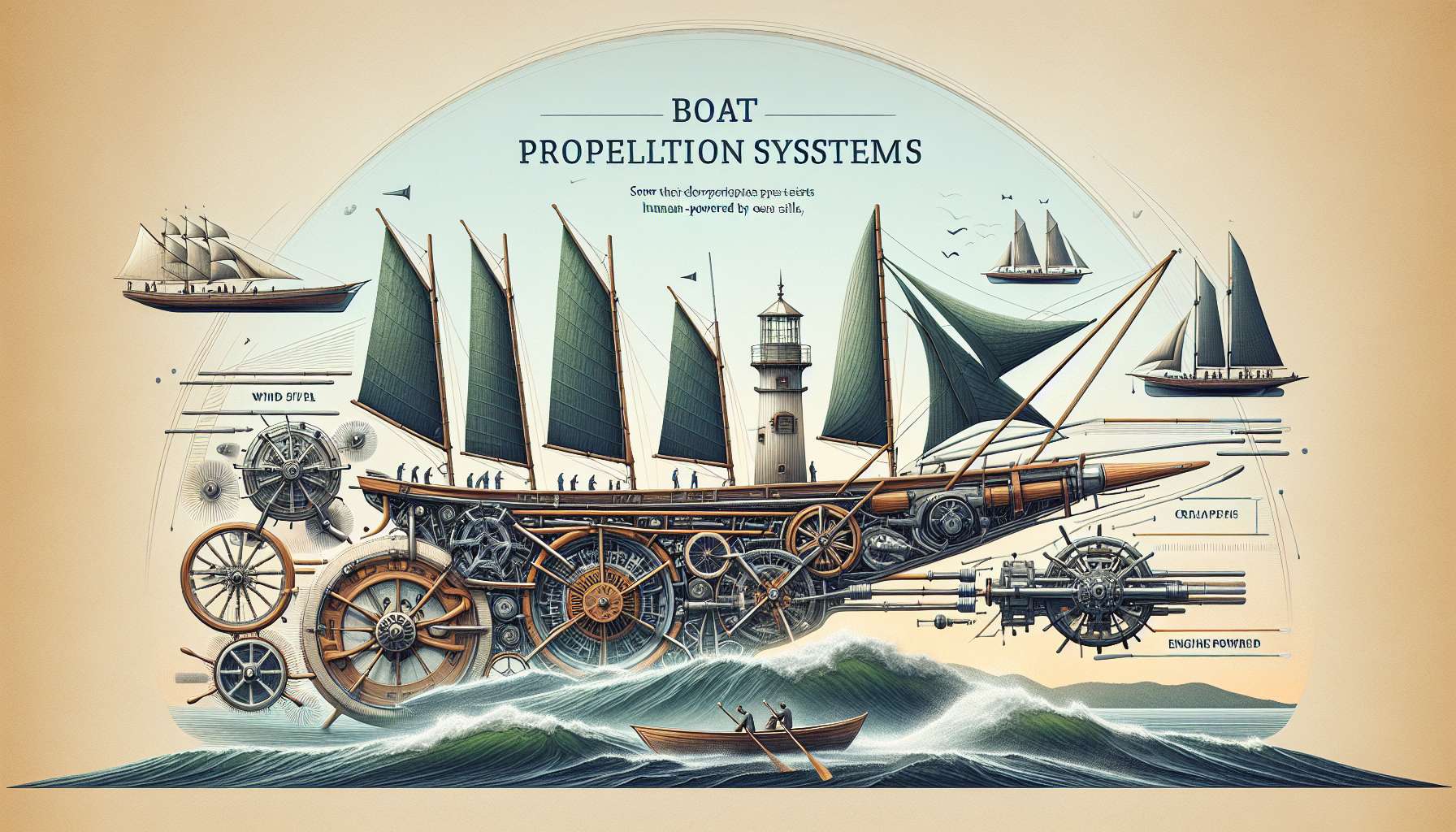Exploring Boat Propulsion Systems: Navigating the Waves of Innovation
When we think about boats gliding effortlessly through the water, we often overlook the intricate systems that power these vessels. Boat propulsion systems are the beating heart of maritime transportation, driving boats forward with efficiency and precision. From traditional methods like sails and oars to modern innovations such as diesel engines and electric motors, the evolution of boat propulsion systems has been a fascinating journey through time. In this comprehensive guide, we will delve deep into the world of boat propulsion systems, uncovering their history, technology, and future prospects.
The Evolution of Boat Propulsion
Boat propulsion has come a long way since the days of ancient civilizations relying on human or animal power to navigate the seas. The earliest forms of propulsion involved rowing and sailing, harnessing the natural forces of wind and muscle power to propel boats across water bodies. Sails were the primary means of propulsion for centuries, allowing sailors to harness the power of the wind to traverse the oceans.
However, as civilizations advanced and technology evolved, new methods of propulsion emerged. The Industrial Revolution brought about significant changes in boat propulsion, with the advent of steam engines revolutionizing maritime transportation. Steam-powered boats, such as paddle steamers and steamships, became popular in the 19th century, offering faster and more reliable means of travel across water bodies.

Types of Boat Propulsion Systems
Today, boat propulsion systems encompass a wide range of technologies and methods, each tailored to suit different types of vessels and applications. Some of the most common types of boat propulsion systems include:
Internal Combustion Engines
Internal combustion engines, powered by gasoline or diesel fuel, are widely used in boats of all sizes. These engines work by burning fuel internally to generate power, which is then used to drive the propeller and move the boat forward. Internal combustion engines are known for their efficiency and reliability, making them a popular choice for many boat owners.
Electric Motors
Electric motors are becoming increasingly popular in the world of boat propulsion, thanks to their eco-friendly and sustainable nature. Electric propulsion systems use batteries to power the motor, offering a quiet and emission-free alternative to traditional fuel-powered engines. Electric motors are especially well-suited for smaller boats and environmentally conscious boaters looking to reduce their carbon footprint.
Hybrid Propulsion Systems
Hybrid propulsion systems combine the best of both worlds, utilizing both internal combustion engines and electric motors to power the boat. These systems offer increased fuel efficiency and reduced emissions, making them an attractive option for boat owners looking to minimize their environmental impact. Hybrid propulsion systems are particularly well-suited for larger vessels and commercial boats where long-range cruising is essential.
The Future of Boat Propulsion
As technology continues to advance at a rapid pace, the future of boat propulsion systems looks brighter than ever. Innovations such as hydrogen fuel cells, solar-powered engines, and even autonomous propulsion systems are reshaping the maritime industry, offering new possibilities for faster, cleaner, and more efficient boat travel.
Hydrogen fuel cells, for example, are gaining traction as a promising alternative to traditional fossil fuel engines. These cells use hydrogen gas to generate electricity, producing only water vapor as a byproduct. Hydrogen fuel cells offer a clean and sustainable energy source for boat propulsion, with the potential to revolutionize the way we power our vessels.

Expert Opinions
According to marine engineer Dr. Catherine Johnson, “The future of boat propulsion lies in sustainable and eco-friendly technologies. Electric motors and hydrogen fuel cells are paving the way for a cleaner and greener maritime industry, offering boaters new options for powering their vessels without harming the environment.”
Common Misconceptions
One common misconception about boat propulsion systems is that electric motors are not powerful enough to propel larger vessels. However, advancements in electric motor technology have made it possible to build high-powered motors capable of driving even the largest boats with ease. Electric propulsion systems are not only efficient but also powerful enough to meet the demands of modern boating.
Conclusion
Boat propulsion systems have undergone a remarkable evolution over the centuries, from simple oars and sails to sophisticated electric motors and hybrid systems. The future of boat propulsion is bright, with innovative technologies offering new possibilities for cleaner, faster, and more efficient marine travel. As we continue to explore new frontiers in boat propulsion, one thing is certain: the journey ahead is bound to be as exciting as the destinations we aim to reach.
To wrap things up, let us remember that the power of innovation and sustainability will drive the future of boat propulsion systems, shaping the way we navigate the waters for generations to come.




